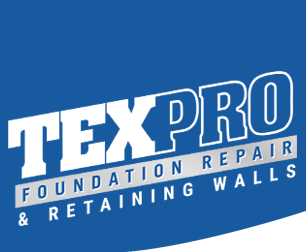A sinking foundation is one of the most common problems – among other problems such as foundation upheaval and cracks – we come across when it comes to foundation issues.
If a building was built on loosely packed soil, then the weight of the structure will act as a compression force causing the soil to compact. This is one of the main reasons for the sinking of a foundation. Another reason is that the soil becomes dry due to reduction of moisture levels in the surroundings causing the grains of soil to shrink, resulting with the foundation losing support and lowering.
A sinking foundation can bring about plights such as cracks in walls or above windows and door frames, uneven floors, doors or windows sticking, etc.
Where the role of a steel pier comes to play.
The purpose of a steel pier is to provide a stable, long-lasting and guaranteed solution for the problem of a sinking foundation. They re-elevate the sunken foundation by providing support in-place of the soil that had once done the job.
Steel piers come in two main types: push steel piers and helical steel piers.
Push steel piers are a set of hollow steel pipes that are pushed into the soil using a hydraulic ram until the end of the pier passes through the loosely packed soil and reaches the load-bearing soil beneath. Push steel piers are more suitable for heavy structures than lightweight structures since they use the weight of the structure in itself to act as a push-back force on the foundation, thus re-elevating it.
Helical steel piers are steel pipes with plates attached to it that make it work in a similar fashion to a screw. Unlike push steel piers, helical steel piers aren’t pushed into the ground but are screwed in. Helical steel piers are also suitable for lightweight structures since it does not depend of the weight of the structure.
The advantages of steel piers
Steel piers have several advantages over its substitutes. They are stronger and more reliable. The reliability and strength of a foundation depends on the depth of the piers used. Steel piers can go deeper into the load-bearing soil than concrete piers hence, it provides better support and strength to the structure. And it can also bear a greater weight than other types of piers.
Steel piers are more stable. Since steel piers have no loose parts or shims they have no means to loose their stability or become shaky with time. This means that you can be reassured that the repaired foundation is here to stay. Installation of steel piers does not require extensive excavations. And since the process of installing the steel piers is direct and swift, it doesn’t create much of a hassle.
Steel piers are also ideal to be used for many different kinds of soil including sandy soil and clay soil. Clay soil is known to be a major issue to foundations because of its extensive expansion and contraction in par with the change in moisture levels. But steel piers prove to be successful in those conditions as well because they drive deep down into the bed rock it self which means it does not rely on the soil layers closer to the surface.
Unlike other types of piers, steel piers are not affected by the soil movements as they are installed deeper into the load-bearing soil layer where the soil movement is minimal.
Understanding the pros and cons of steel piers
Just like everything else in this world, while having many pros, a steel pier has its cons as well. One such major disadvantage that comes to light regarding steel piers is its cost. Steel piers, when compared with other substitutes, are very expensive. But when considering the numerous other advantageous it gives us – such as its unyielding stability, immense strength easy installation, etc – the expense is worth it.
Another hitch that may occur with regard to steel pier is that if the steel pier isn’t installed all the way through to the load-bearing soil, it might become shaky. However, this can be easily avoided if you consult a good foundation contractor before going ahead with the repairs.
Reasons to consider steel piers with foundation repair
When repairing the foundation it would be best to look for a more permanent solution than a cheap and temporary one because repairing the foundation for a second time might be more costly than the first. For this reason it is highly recommended to use steel piers for foundation repair since its more or less a permanent solution.
Steel piers might be expensive, but when comparing with other substitutes that aren’t long-lasting, and require replacements, it is indeed much more cost effective.


